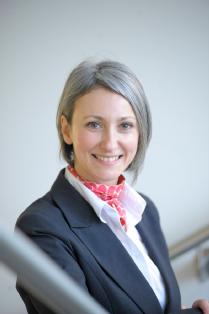WMG News - Latest news from WMG
National Grid calls on support from the construction industry to improve wellbeing for workers
 • Research shows 91% of construction workers have felt overwhelmed and 26% have experienced suicidal thoughts*
• Research shows 91% of construction workers have felt overwhelmed and 26% have experienced suicidal thoughts*
• National Grid issues call to join its Health in Construction Consortium to improve wellbeing of workers across the industry.
• National Grid opens new Health Hub at IFA interconnector site to provide wellbeing support for staff and contractors
National Grid is calling on the construction sector to work together to develop an industry-wide approach to improve the mental health and well-being of its workers.
Suicide rates for construction workers in the UK are over three times the national average with over two employees dying by suicide every day.
This highlights that wellbeing initiatives are not reaching the most vulnerable and more needs to be done to improve support and services offered within the sector.
There are a range of factors which make construction employees especially at risk of poor mental health including regular periods of underemployment, extended time spent away from family and friends and high mobility within the workforce. This has only been exacerbated through the pandemic.
According to research by CIOB, some 91% of workers report feeling overwhelmed and 26% have experienced suicidal thoughts. *
National Grid is determined to change this, by establishing a Health in Construction Consortium and leaders have called for supporters from throughout the sector to join the project.
The call to action was made at the official launch of a new on-site Health Hub at the company’s IFA interconnector site in Kent on Thursday. (19th May).
The facility has been specially designed to improve the wellbeing of construction workers and includes a canteen providing heathy meals, recreational space, a garden and a gym as well as a quiet room for prayer and reflection.
Services such as mental health and wellbeing sessions, training and support helplines will be provided by charity Lighthouse Construction Industry Charity which provides vital support for those working within the sector.
The facility, which has been constructed by contractor J Murphy & Sons Limited, is already providing vital services to hundreds of employees working around the clock at the company’s IFA interconnector.
Together with Considerate Constructors Scheme, National Grid has established a Health in Construction Consortium and will be sharing findings from this project across the industry to demonstrate the difference this kind of support can make to workers.
Managing Director of Interconnectors for National Grid, Nicola Medalova, said: “This is an issue that all of us in the construction sector have a responsibility to address. The research shows that something has to change. That’s why we’re looking for representatives from across the sector including small to medium-sized enterprise, large businesses, contractors, and clients, who are passionate about mental health, to be part of the solution. We understand that collaboration and coordination across key stakeholders in the industry will be critical to tackling the mental health crisis in construction. So, whether you are getting started, in development, or leading the way on mental health issues within the sector, we call for your support and ask for you to join us in being an agent for change.”
Considerate Constructors Scheme Chief Executive Amanda Long said: “As an industry, the workforce is at a higher-than-average risk of poor mental health and suicide and we must take action. It is vital that we work together with the construction sector to give all employees access to the support and facilities they need to look after their mental health and wellbeing.”
Chief Executive of Lighthouse Construction Industry Charity Bill Hill said: “We are absolutely delighted to be working with National Grid on this significant issue within our industry. It is so important that we get the message of support to the 'boots on the ground' that we are there for them 24/7. If our workforce don’t know we are there for them we simply can’t help them in crisis. We are delighted to support National Grid’s Wellbeing Hub and I am convinced that this initiative will have a positive impact on workforce wellbeing and ultimately save lives.”
National Grid is working with WMG at the University of Warwick to research the experiences of construction workers using the Health Hub, and the benefits these additional services will have on employee mental wellbeing. The project is being led by Dr Carla Toro, Associate Professor in Digital Healthcare Sciences at WMG.
The research will help the business understand and make recommendations to the sector on the challenges that the construction workforce experience, and the kinds of wellbeing initiatives that could have a positive impact on quality of life and mental health.
Organisations interested in joining the Health in Construction Consortium should contact Alisha Baig by emailing alisha.baig@nationalgrid.com
*Source of Research: 2019 CIOB (The Chartered Institute of Building) Research & Survey: Understanding Mental Health in the Built Environment.
Exercise fell during lockdown particularly for groups most at risk
· During the COVID-19 March-June 2020 lockdown in the UK everyone was encouraged to stay at home and only leave the house once a day to exercise
· A study of UK residents has found that groups including those who are BAME, obese and/or city dwellers reported a greater reduction in physical activity during the lockdown than other groups
· The research highlights the need for targeted interventions to ensure that physical and mental health impacts of sedentary behaviour are not exacerbated over the long-term by significant reductions in physical activity identified in groups who are more vulnerable to COVID-19
 A study of UK resident’s exercise patterns during the COVID-19 lockdown in March-June 2020, has found that groups that were most at risk to the adverse effects of COVID-19 were impacted the most in terms of reducing their levels of exercise. Researchers led by WMG, University of Warwick say targeted interventions are required to ensure physical and mental health impacts of sedentary behaviour do not exacerbate the risks to these groups.
A study of UK resident’s exercise patterns during the COVID-19 lockdown in March-June 2020, has found that groups that were most at risk to the adverse effects of COVID-19 were impacted the most in terms of reducing their levels of exercise. Researchers led by WMG, University of Warwick say targeted interventions are required to ensure physical and mental health impacts of sedentary behaviour do not exacerbate the risks to these groups.
When the first UK lockdown was announced in March 2020 to prevent the spread of COVID-19, all UK residents were permitted to leaving the house to exercise once a day. Researchers from WMG, University of Warwick decided to investigate which population groups had reduced or increased physical activity levels during the lockdown.
In the paper, 'Stay at Home and Stay Active? The impact of the stay-at-home restrictions on physical activity routines in the UK during the COVID-19 pandemic' , published in the Journal of Sports Sciences, researchers led by WMG, University of Warwick have found that in some of the most at-risk groups their level of physical activity was substantially decreased.
Researchers surveyed UK residents through a rewards-for-exercise app called Sweatcoin, and an online panel. The Sweatcoin app users provided data of their daily step count prior to and during the March-June 2020 lockdown.
Researcher’s key findings show that there was a particular reduction in physical activity in those classed as obese, gym users, and people living in urban areas. All groups had a decreased step count during the restrictions, however this was particularly prominent in BAME (Black, Asian and Minority Ethnic) groups and urban dwellers.
Dr Mark Elliott from WMG, University of Warwick comments:
“Our study wanted to determine which groups had managed to exercise more during the 2020 lockdown and which had struggled to maintain their usual exercise routines. It became clear that people living in rural areas were more likely to have increased levels of physical activity, compared to city dwellers. However, groups that were particularly vulnerable to COVID-19, such as BAME and obese, had significantly reduced their physical activity during the lockdown compared to before the restrictions were put in place.
“The long duration of the lockdowns can mean it is difficult for people to return to their old routines, and therefore, there should be targeted interventions to ensure that the already significant issue of sedentary behaviour doesn’t become exacerbated by the effects of the pandemic.”
Autistic children in Berkshire school to benefit from new Digital Healthcare Apprentice support
Prior's Court, a specialist residential school in Berkshire and training and development centre for young people aged between 5-25 who are severely affected by autism, is working with WMG at the University of Warwick to help recruit two specialist Digital Healthcare apprentice staff.
The new Digital Healthcare Apprentices will investigate and evaluate data collected on Prior’s Court pupils to support improvements in the wellbeing and experiences of young people with autism at Prior's Court –and will be part of the first wave of a new, innovative national digital healthcare science workforce, working in health and social care to improve people’s health and wellbeing.
Using ‘Big Data’ mining techniques the apprentices, working under joint supervision by academics and specialist autism practitioners, will be able to sift more than a million data points to identify circumstances which predict particular behaviour patterns. This will in turn enable earlier intervention steps to be taken.
This could make a major difference to their quality of life, minimising incidents and perhaps even enabling a young person at the school to later enter employment where this was may have not been previously possible.
The two new Digital Healthcare Apprentices will provide specialist support to the Foundation and its young people, while also studying towards a Bachelor of Science Undergraduate degree in Digital Healthcare Science with the University of Warwick drawing on the expertise of two departments – WMG and Warwick Medical School.
Prior’s Court Chief Executive Mike Robinson said: “Autism is a complex condition. The fundamental question ‘Why does someone with autism have a good day or a bad day?’ is a difficult one to answer. For the young people at Prior’s Court who are severely affected by autism, often with other complex coexisting conditions, it is almost impossible to answer. We believe that by applying the power of being able to collect and analyse large quantities of data to this problem, we will be able to start to answer the question.
“Our digital platform Prior Insight is capturing thousands of pieces of data on our young people every day but it is the practical application which is key. By working with the University of Warwick and recruiting Digital Healthcare Apprentices we can ensure that data is comprehensively analysed and applied to positively impact the lives of many more people with autism – both at Prior’s Court and in the wider world of autism.”
Professor Ed Peile, of Warwick Medical School, comments:
“On my first visit to Prior’s Court I was inspired by how the team there are constantly striving to help young people with severe autism lead happy and fulfilling lives. I was keen to see their cutting edge project using the digital platform ‘Prior Insight’ and to understand what role future members of the new specialism Digital Healthcare Science could play.
“It was immediately apparent to me that, both in their apprenticeship training and when they graduate, Digital Healthcare Scientists have so much to offer at Prior’s Court, and so much to gain there. Thanks to the investment in data collection at Prior’s Court, there is a huge amount of information about how each young person functions.
“Not only that, but working with other technologies including ‘wearable digital technology’ and using the skills of behavioural science and shared decision-making taught on our innovative ‘fusion science course’ will enable the apprentices to contribute as they learn in the workplace.”
How to apply
Applications for the two new roles close in just two weeks on 30th September 2020. Details on how to apply can be found here
New approach helps computers deal with conflicts and duplications when applying more than one clinical practice guideline to a patient
Researchers in WMG at the University of Warwick have developed a new method that could solve the problem of how to automate support of managing the complexities of care when applying multiple clinical practice guidelines, to patients with more than one medical issue.
This will preserve the speed and accuracy of automated treatment decisions without introducing serious treatment conflicts or wasteful duplication of treatments and procedures.
Clinical Practice Guidelines (CPGs) are evidence-based statements or flow charts, which are used to support the decision-making of health professionals. CPGs are a body of knowledge representing best practice, based on the available evidence. Guidelines are relatively straightforward to input into a computer (a.k.a Computer Interpretable Guidelines (CIGs)), enhancing the speed and accuracy of patient care in many situations.
However, it becomes more problematic for patients who have more than one conditions. In such cases (known as multimorbid patients), the guideline recommendations for each treatment can be at odds, produce serious treatment conflicts and ultimately potential harm to the patient.
For instance, one drug-based medication might assist one condition but could worsen the other. This is particularly critical for elderly patients who are most likely to have dynamic and multiple health conditions.
The research team from WMG’s Institute of Digital Healthcare at the University of Warwick (Ms Eda Bilici, Dr George Despotou and Professor Theodoros  Arvanitis) have implemented a framework of automating computer-based management of multiple Clinical Practice Guidelines to overcome this problem.
Arvanitis) have implemented a framework of automating computer-based management of multiple Clinical Practice Guidelines to overcome this problem.
The new framework is called MuCIGREF – (Multiple Computer Interpretable Guideline Representation and Execution Framework). It allows development CIG models for each CPG. Once the CIG models are created, they are then concurrently executed to generate a unified personal plan for each individual multimorbid patient.
It ensures care optimisation to avoid unnecessary resource use or potential care duplications because of the multiple plans (e.g., carer time, lab test).
It identifies potential conflicts in the care plan and resolves them through the modification of clinical activities (e.g., activity start time, duration), or its associated care element (e.g. the drug dose level)
The researchers tested the new framework on several CPGs from the UK National Institute of Care Excellence (NICE), and they hope to conduct further work that will involve user validation and application in real-world cases.
This first stage in the work has just been published in a chapter entitled “Concurrent Execution of Multiple Computer- interpretable Clinical Practice Guidelines and Their Interrelations” in the Ebook Health Informatics Vision: From Data via Information to Knowledge
ENDS
4 OCTOBER 2019
NOTES TO EDITORS
Paper Available to view at: https://www.ncbi.nlm.nih.gov/pubmed/31349252
Eda Bilici has received a PhD scholarship from WMG, University of Warwick. Prof Theodoros Arvanitis and Dr George Despotou have been supported by the EU H2020 C3-Cloud Project
FOR FURTHER INFORMATION PLEASE CONTACT:
Alice Scott
Media Relations Manager – Science
University of Warwick
Tel: +44 (0) 2476 574 255 or +44 (0) 7920 531 221
E-mail: alice.j.scott@warwick.ac.uk
New MRI computing technique can spot scar muscles of heart without damaging kidneys
 - Traditional MRI scans use the metal gadolinium, which resonates areas of the heart muscles that are not functioning efficiently, however gadolinium affect the Kidney function
- Traditional MRI scans use the metal gadolinium, which resonates areas of the heart muscles that are not functioning efficiently, however gadolinium affect the Kidney function
- The new 3D MRI computing technique calculates strain in heart muscles showing which muscles are not functioning enough without damaging other organs - researchers at WMG, University of Warwick have found
- The new technique is less stressful for the patient
3D MRI computing can measure strain in the heart using image registration method. Traditional method involves giving the patient a dose of gadolinium which can affect the kidney, researchers at WMG, University of Warwick have found.
MRIs are used to diagnose cardiac disease such as cardiomyopathy, heart attacks, irregular heartbeats and other heart disease.
Traditionally when a patient goes for an MRI scan they are given a dose of gadolinium, which reacts the magnetic field of the scanner to produce an image of the protons in the metal realigning with the magnetic field. The faster the protons realign, the brighter the image features and can show where the dead muscles are in the heart and what the diagnosis is.
The dose of gadolinium can have detrimental effects to other parts of the body, particularly the risk of kidney failure.
A new 3D MRI computing technique developed by scientists in WMG at the University of Warwick, published today, 28th August, in the Journal Scientific Reports titled ‘Hierarchical Template Matching for 3D Myocardial Tracking and Cardiac Strain Estimation’ focuses on Hierarchical Template Matching (HTM) technique. Which involves:
- A numerically stable technique of LV myocardial tracking
- A 3D extension of local weighted mean function to transform MRI pixels
- A 3D extension of Hierarchical Template Matching model for myocardial tracking problems
Therefore meaning there is no need for gadolinium reducing the risk of damage to other organs.
Professor Mark Williams, from WMG at the University of Warwick comments:
“Using 3D MRI computing technique we can see in more depth what is happening to the heart, more precisely to each heart muscles, and diagnose any issues such as remodelling of heart that causes heart failure. The new method avoids the risk of damaging the kidney opposite to what traditional methods do by using gadolinium.”
Jayendra Bhalodiya, who conducted the research from WMG, University of Warwick adds:
“This new MRI technique also takes away stress from the patient, as during an MRI the patient must be very still in a very enclosed environment meaning some people suffer from claustrophobia and have to stop the scan, often when they do this they have to administer another dose of the damaging gadolinium and start again. This technique doesn’t require a dosage of anything, as it tracks the heart naturally.”
WMG Professor takes on new role as Chair of the Faculty of Science, Engineering and Medicine
 WMG Professor of Applied Psychology, Caroline Meyer, has been appointed as the new Chair of the Faculty of Science, Engineering and Medicine for the University of Warwick
WMG Professor of Applied Psychology, Caroline Meyer, has been appointed as the new Chair of the Faculty of Science, Engineering and Medicine for the University of Warwick
Professor Meyer will take up her new role when the current Chair of Faculty, Professor Mike Shipman, steps down over the summer.
Professor Meyer joined WMG at the University of Warwick from Loughborough University. With over 20 years experience in mental health and wellbeing, Professor Meyer sits on the Coventry Health and Wellbeing Board and West Midlands Combined Authority Board. She has also worked extensively with industry, from SMEs to multi-nationals, and third sector organisations, including internationally.
At WMG, Professor Meyer launched a new team focusing on Applied Psychology. This involves the application of psychological theory and techniques (including decision-making and cognitive and behavioural change) to improve mental health, workforce productivity and product innovation. The group also delivers fusion science research-led education programmes.
Professor Meyer will manage this new role alongside her current research responsibilities within WMG.
The role of the Faculty Chair
In addition to chairing the Board of the Faculty, Chairs of Faculties serve on a range of committees at the University, and are responsible for promoting the policies, programmes and procedures within their respective Faculty. Faculty Chairs are also a source of support and act as ‘first port of call’ for Heads of Department and Research Centres in the relevant Faculty and inform and influence the Faculty on key decisions affecting it and the University.
Faculty Chairs are also engaged in the appointment processes for key academic posts within the Faculty. Chairs serve ex officio on the following formal bodies: Senate, Steering Committee, Research Committee, Honorary Degrees Committee, Academic Quality and Standards Committee, Capital, Space and Amenities Group, the Academic Resourcing Committee, and might also act as Chair of the Investigating Committee and Appeals Committee.
Improving mental health in the workplace pilot is awarded £6.8m funding
 We are delighted to be partnering with project leads Coventry University and West Midlands Combined Authority (WMCA) in a major new mental health pilot.
We are delighted to be partnering with project leads Coventry University and West Midlands Combined Authority (WMCA) in a major new mental health pilot.
The programme will involve the university co-leading a group of health professionals, academics and business leaders who have been awarded £6.8m by the Government to tackle poor mental health in the workplace.
At any one time, a sixth of the population in England aged 16 to 64 has a mental health problem¹, which costs employers between £33 billion and £42 billion a year in lost productivity².
Recognising the huge impact mental health issues have on employees’ wellbeing and employers’ productivity, the Midlands Engine Mental Health and Productivity Pilot has been created to break down the barriers to people suffering mental health problems and facilitate their return to work.
A partnership between the University of Warwick, Coventry University, West Midlands Combined Authority and supported by MIND, the pilot will be delivered by a multi-disciplinary group including:
- Seven universities in the West and East Midlands
- Occupational and clinical psychologists, psychiatrists, public health specialists, service delivery leaders, Public Health England and the NHS
- Small, medium and large businesses, policy makers, economists and nine Local Enterprise Partnerships (LEP) across the Midlands Engine region.
The collaborative approach and multi-channel engagement of all of the partners is essential for the pilot to complete a number of different work streams over the next three years.
The pilot will start by scoping data collection from health professionals and recruiting over 1,000 small, medium and large businesses to take part.
As the programme develops, measures will be employed that allow for the early identification of mental health problems, and provide a range of bespoke actions to provide support to those with difficulties and develop appropriate advisory mechanisms. The pilot will then deliver a model of how a mental health specialist can interface between businesses and mental health providers, as well as an online toolkit for mental health sufferers.
 Professor Caroline Meyer, from WMG said: “I am delighted to be leading the University of Warwick arm of this Midlands Engine project. Working in close collaboration with our partners at Loughborough University and the Universities of Nottingham and Birmingham, we will gather and pilot interventions that we believe will make a huge difference to employees and employers across the whole region and further. A step change in activity is required to address poor mental health and help people to thrive at work.
Professor Caroline Meyer, from WMG said: “I am delighted to be leading the University of Warwick arm of this Midlands Engine project. Working in close collaboration with our partners at Loughborough University and the Universities of Nottingham and Birmingham, we will gather and pilot interventions that we believe will make a huge difference to employees and employers across the whole region and further. A step change in activity is required to address poor mental health and help people to thrive at work.
“The workplace provides a unique opportunity to identify and support those people who might otherwise receive no intervention, as well as supporting those with existing problems. The result of this project will be tools that will enable us to do deliver these things.
Professor Guy Daly, Pro-Vice-Chancellor, Health and Life Sciences, said: “Over the next three years, the Midlands Engine Mental Health Productivity Pilot will engage with over 1,600 businesses, train 45,000 staff and offer a free online resource that aims to reach one million people.
“Together we will deliver a step change in the support offered to employers and employees, which will deliver better mental health, leading to higher levels of productivity across all types of organisations in the East and West Midlands.”
West Midlands Combined Authority (WMCA) Wellbeing Director Supt Sean Russell said: “We are delighted to have been given this opportunity to scale up our work and build on some of the existing Thrive initiatives which have been developing in the West Midlands over the last three years.
“We can also learn from the work undertaken by MIND nationally to promote a strong evidence-based delivery programme for the whole Midlands.”
Unfit people are more physically active because of the Sweatcoin app that pays you to walk
More people are physically active due to the Sweatcoin app which rewards you for walking – researchers at the Institute of Digital Healthcare, WMG at the University of Warwick have found. Sweatcoin gets people outdoors and walking to earn a virtual currency to spend in their marketplace.
Reaching your target number of steps a day is a little easier for those using the app called Sweatcoin which rewards users with a virtual currency for walking.
Sweatcoin works by converting the number of steps recorded on your phone into a virtual currency of Sweatcoins.
Every 1,000 steps generate 0.95 Sweatcoins and these can be used to purchase products on the in-app marketplace, (with prices ranging from 5 to 20,000 Sweatcoins), in local shops, or be transferred between other users.
Currently, steps recorded outdoors are rewarded due to the use of a GPS-based verification algorithm used to stop people cheating their phone’s step-counting algorithm.
The Institute of Digital Healthcare, WMG at the University of Warwick analysed daily step count data from 6000 users of the app, and found that there was a sustained average increase of nearly 20% in daily step count over a 6-month period after users had registered with the app, in comparison with a 3-month period prior to downloading the app.
Following a survey on a sample of the original 6000 users, those who were classified as less physically active and overweight were found to be most likely to increase their daily step count when using the app, meaning that Sweatcoin was having impact on an important section of the population who previously had low levels of physical activity.
 Dr Mark Elliott, Assistant Professor at the Institute of Digital Healthcare, WMG - University of Warwick comments:
Dr Mark Elliott, Assistant Professor at the Institute of Digital Healthcare, WMG - University of Warwick comments:
“We were delighted to have the opportunity to work with Sweatcoin and investigate how their app impacts on physical activity behaviour change. By analysing the daily step count data from a sample of Sweatcoin users and combining this with data from the surveys and focus groups facilitated by our researchers, we were able to identify which types of user had shown the biggest change in terms of increased physical activity from using the app.”
Anton Derlyatka co-founder at Sweatcoin comments:
"Incentivising people to walk more is key to improving levels of sustained physical activity. Yet, traditional ideas such as providing educational seminars or discounted gym passes, just don’t deliver. The University of Warwick found that an economy built on movement, as created by Sweatcoin, establishes sustained motivation for people to be more active. For an increasingly sedentary population facing an obesity and wellness crisis, these are significant findings.”
Lord Philip Hunt, Sweatcoin Advisory board member commented:
“Most health apps and initiatives tend to be aimed at those who are already active. Sweatcoin has huge potential in encouraging and incentivising non-active people to get walking. Given the health gains that can be achieved through increased physical activity, this is the kind of breakthrough we need to help motivate who can benefit most.”
New research finds that artificial intelligence can dramatically cut time needed to process abnormal chest x-rays
New research has found that a novel Artificial Intelligence (AI) system can dramatically reduce the time needed to ensure that abnormal chest X-rays with critical findings will receive an expert radiologist opinion sooner, cutting the average delay from 11 days to less than 3 days. Chest X-rays are routinely performed to diagnose and monitor a wide range of conditions affecting the lungs, heart, bones, and soft tissues.
Researchers from WMG at the University of Warwick, working with Guy’s and St Thomas’ NHS Hospitals, extracted a dataset of half million anonymised adult chest radiographs (X-rays) and developed an AI system for computer vision that can recognise radiological abnormalities in the X-rays in real-time and suggest how quickly these exams should be reported by a radiologist. In the process of building the AI system, the team developed and validated a Natural Language Processing (NLP) algorithm that can read a radiological report, understand the findings mentioned by the reporting radiologist, and automatically infer the priority level of the exam. By applying this algorithm to the historical exams, the team generated a large volume of training exams that allowed the AI system to understand which visual patterns in X-rays were predictive of their urgency level.
The research team, led by Professor Giovanni Montana, Chair in Data Science in WMG at the University of Warwick, found that normal chest radiographs were detected with a positive predicted value of 73% and a negative predicted value of 99%, and at a speed that meant that abnormal radiographs with critical findings could be prioritised to receive an expert radiologist opinion much sooner than the usual practice.
detected with a positive predicted value of 73% and a negative predicted value of 99%, and at a speed that meant that abnormal radiographs with critical findings could be prioritised to receive an expert radiologist opinion much sooner than the usual practice.
The results of the research are published today, 22nd January 2019 in the leading journal Radiology in a paper entitled “Automated triaging and prioritization of adult chest radiographs using deep artificial neural networks.”
WMG’s Professor Giovanni Montana said:
“Artificial intelligence led reporting of imaging could be a valuable tool to improve department workflow and workforce efficiency. The increasing clinical demands on radiology departments worldwide has challenged current service delivery models, particularly in publicly-funded healthcare systems. It is no longer feasible for many Radiology departments with their current staffing level to report all acquired plain radiographs in a timely manner, leading to large backlogs of unreported studies. In the United Kingdom, it is estimated that at any time there are over 300,000 radiographs waiting over 30 days for reporting. The results of this research shows that alternative models of care, such as computer vision algorithms, could be used to greatly reduce delays in the process of identifying and acting on abnormal X-rays - particularly for chest radiographs which account for 40% of all diagnostic imaging performed worldwide. The application of these technologies also extends to many other imaging modalities including MRI and CT.”
ENDS
Note for Editors:
All historical radiographs in our dataset were formally reported by one of 276 different reporters including board-certified radiologists, trainee radiologists and accredited reporting radiographers. The reports and images used in this study were anonymized prior to modelling thus did not contain any referral information or patient-identifying data.
WMG project tackles data sharing issues in the healthcare sector
Researchers from the Institute of Digital Healthcare (IDH) at WMG are working with healthcare software experts at Dovetail Lab on ‘General Practice of the Future.’
Using Blockchain Technology, our team of Assistant Professor George Despotou, Research Assistant Jill Evans, Professor Theo Arvanitis and PhD student Tim Robbins are developing a digital consent service for the exchange of patient data across electronic health records in an integrated care setting. High levels of encryption allow information to be shared securely with consent, and audit records stored on a “Blockchain” to ensure compliance with information governance rules.
Patients using this consent mechanism will be able to actively control how they share their data, and approve or refuse (case-by-case), from a mobile app.

